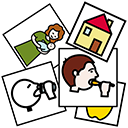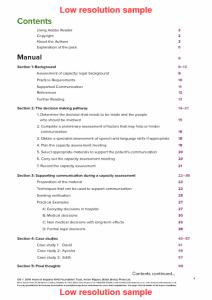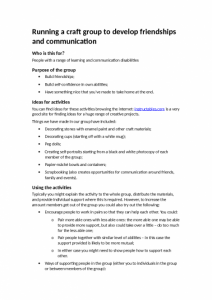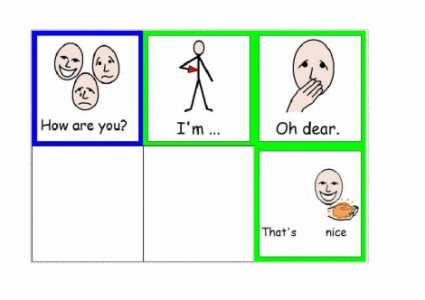Search
User login
ARASAAC Symbols - Colour
Arasaac picture symbols in colour

Picture symbols for over 11000 words in English from the Aragonese Portal of Augmentative and Alternative Communication. You can use these in your documents or you could use it in conjunction with the Commtap Symboliser for PowerPoint. The image format used in this set is "png" which is a commonly used image format.
Encouraging eye gaze communication (no tech)
Helping a child to use/begin to use an eye gazing to communicate choices or an action they would like you to do - with pictures and (optionally) a perspex eye gaze frame (i.e. sheet of clear plastic you hold up between you and the child to fix communication pictures on).
Encouraging looking at an appropriate picture
In this situation you know what the child wants - e.g. they want the mirror chimes, or they want you to spin them, but they are not looking at the appropriate picture or picture symbol. This can happen if the child is new to this communication method, or you've put pictures in a different position on the frame in front of the child, or you are presenting new picture symbols.
Try
Make an Eye Gaze Communication Book using PowerPoint
Using a PowerPoint template to easily create Eye Gaze communication frame books.
This PowerPoint template speeds up the creation of eye gaze communication frames:
Multi-syllable (polysyllable) word lists
Lists of words containing more than two syllables.
Three syllable words
alarm clock
alphabet
ambulance
banana
bicycle
butterfly
cereal
chimpanzee
chocolate
computer
dinosaur
elephant
fingernail
fire engine
gorilla
hair dryer
hospital
jellyfish
lasagne
library
magazine
microwave
museum
newspaper
octopus
orange juice
parachute
pelican
polar bear
ponytail
potato
radio
raspberry
skeleton
spaghetti
strawberry
submarine
sunglasses
swimming pool
Add stuff to Commtap
Commtap is a free collaborative website - it would be brilliant if you could add something to it!!
Upload a file
This is the easiest thing to do. Just upload a file from your computer with ideas related to communication in it.
Time required to do this: less than a minute.
Activities for comprehension of concepts
Created 19 November 2015; updated 25 November 2015.
Assessment of Decision Making Capacity (Sample)
20 page sample of a 237 page pack for facilitating the assessment of decision-making capacity of people having a communication impairment in the hospital setting.
Created 30 September 2015; updated 12 October 2015.
Resources for developing children's and adults' communication skills created by speech and language therapists and other specialists. These resources are suitable for use by speech and language therapists, school or centre staff, parents and carers.
Running a craft group to develop friendships and communication
This provides suggestions for developing friendships and communication skills through running a craft group: particularly suitable for adults with a range of learning disabilities.
Created 21 July 2015.
Prompts for a simple conversation
These cards contain prompts to guide someone through a simple three turn conversation. Each one contains a question, followed by a starter for a response, and then a comment responding to that response. You can take either role in the conversation (the person asking the question and giving the comment at the end, or the person answering the question).
Note, the pictures used in this resource are from Widget (Communicate in Print 2).
Created 15 July 2015.
Work out how likely an assessment result could have been achieved by chance
A calculator that you can use to work out how likely that a child/adult could have come up with a score in an assessment test by chance. For example, suppose you had 12 pairs of pictures, and a child was able to point to 9 of them correctly from an instruction - is that a good result or not? No hard maths involved!
Phonetic character lists
If you want to use any special phonetic characters, you can copy and paste them from this page. Note, the examples below will vary from accent to accent. For a complete list of phonetic symbols for RP English, see: https://www.phon.ucl.ac.uk/home/wells/phoneticsymbolsforenglish.htm.
Consonants
Use a simple conversational structure over three turns
| Activity/strategy name and materials required | How to do the activity | Key principles for doing the activity and comments |
|---|---|---|
| How are you? | Two turns
Three turns Once two turns is mastered as above, move to three turns:
| For the three turns part, if a student makes a different response to the answer to their question than one of the possible responses on the prompt cards then that's fine as long as it is relevant. Otherwise, prompt them to make a response from one of the prompt cards. You could show different prompt cards, or you could show just one prompt card for the response in the last turn. |
| What have you been doing? | For this activity, a student using a contraction of the question is also fine (e.g. "What doing"), this activity is about creating turns in a conversation. | |
| Topic of interest - what have you got? Prompt cards for a "what have you got" conversation Set of pictures (e.g from Google) relating to a topic of interest to the student - e.g. Tesco, the park, Eastenders. |
Support Commtap to keep it online
Thank you for visiting Commtap.
Please read this message as it is extremely important.
- Visitor donations mean we can continue to host over 1,000 free activities to support speech, language, and communication development.
- Visitor donations mean we can continue to provide free resources to address a wide range of communication needs, including limited speech or language, interaction challenges, and needs associated with conditions such as developmental language disorder, autism, and cerebral palsy.
- Visitor donations mean we can continue to provide resources to support the work of speech and language therapists, teachers, teaching assistants, parents, and carers.
- Visitor donations mean we can continue to provide the free key word sign dictionary (bks.org.uk) which has over 2,000 Makaton and Signalong signs.
We know that not everyone is able to afford to pay to access these resources, however, if you can, please make a donation to keep the site going.
Thank you
Google ads on this page are provided by Google Adsense - and their presence does not imply any endorsement by Commtap. Report a problem with an ad on this page. Log in (for free) to avoid seeing Google ads.





